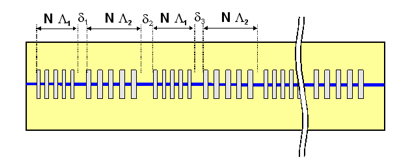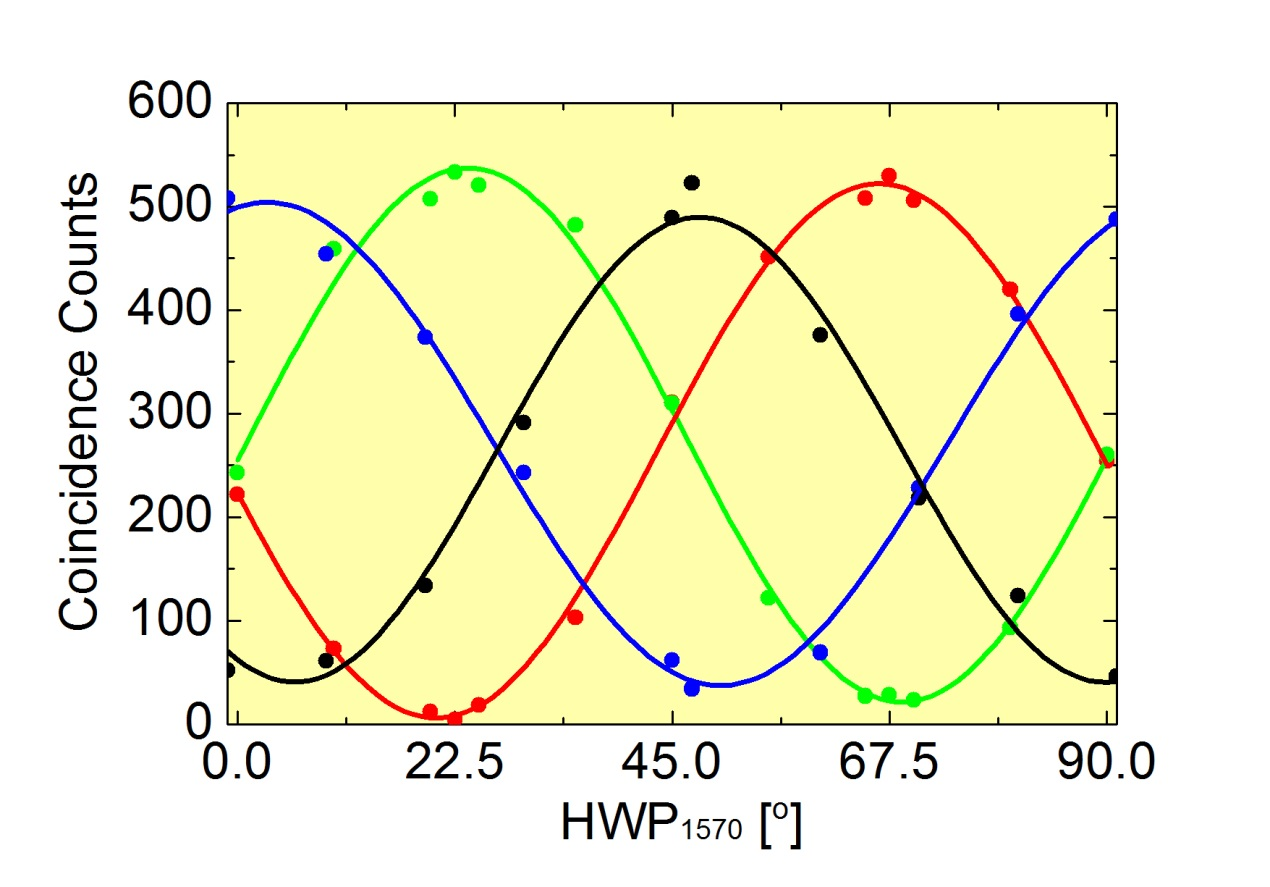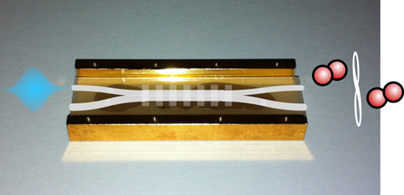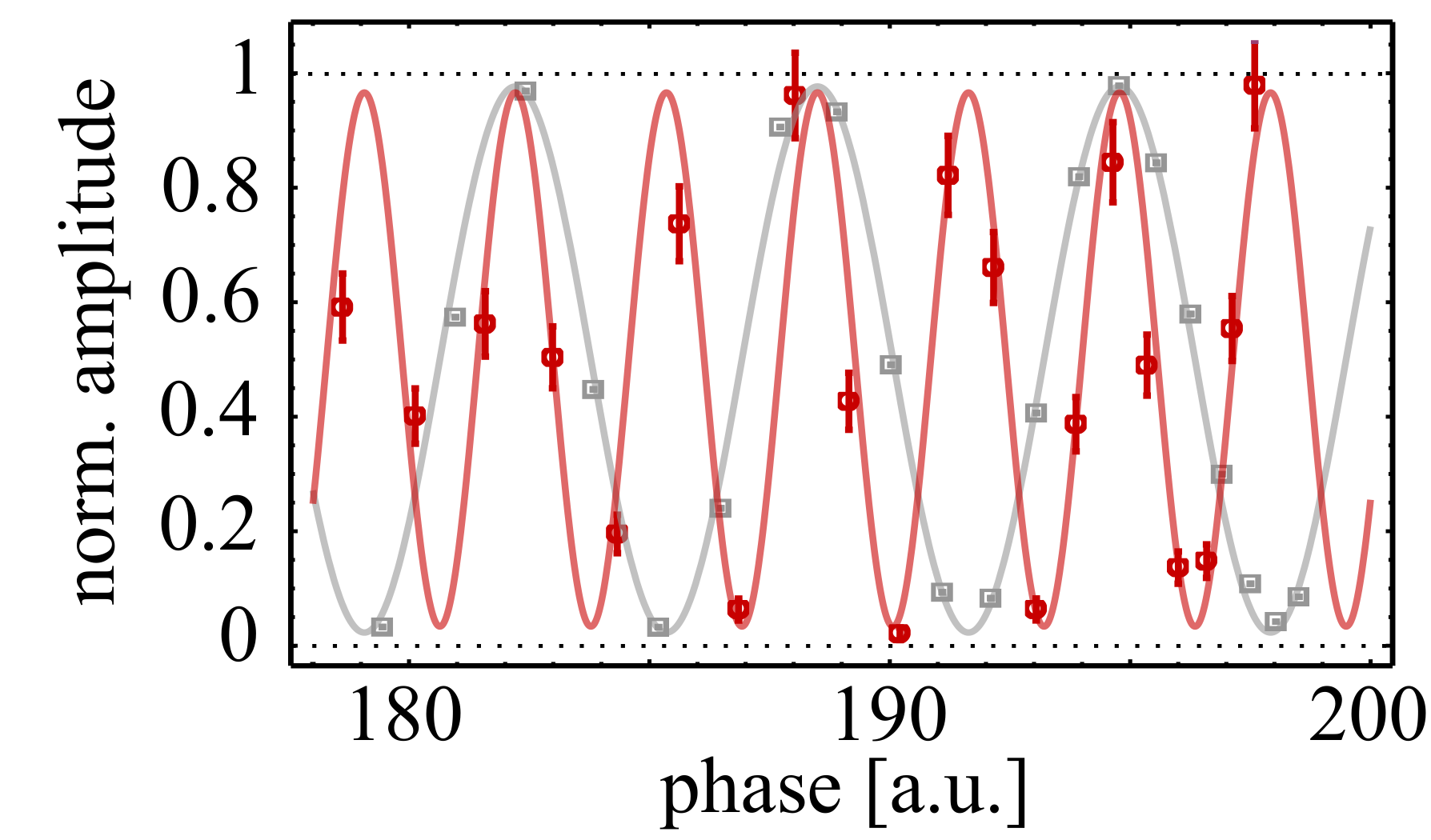Entangled Sources
The capability to distribute entanglement to remote locations is a precursor for future quantum systems. Of particular interest are entanglement-based quantum communication systems compatible with existing standard fiber telecom networks. The development of telecom compatible, compact and reliable sources of entangled photons is a prerequisite to pave the way for a successful implementation of future quantum information technologies into real world applications. Therefore, some of our current activities address the development of rugged and efficient entangled photon (pair) sources.
This interlaced domain grating in the PPLN waveguide enables the direct generation of non-degenerate, polarization entangled photon pairs with high brightness of B = 7 × 103 pairs/(s×mW×GHz). The spatial separation of the photon pairs is accomplished by a fiber-optical multiplexer facilitating a high compactness. Visibilities exceeding 95 % (as shown in Fig. 2) and a violation of the Bell inequality with S = 2.57±0.06 has been demonstrated [1].
Due to the intrinsic structure of our source, we can use the pump wavelength of our PDC process to spatially tune the properties of our generated quantum state. This tunability is directly integrated into the source and does not require any additional overhead during the generation process, nor the application of any post-processing in the experimental implementation.
In order to prove that really a pure N00N state is generated and that the photons coming out of the two waveguides are in a superposition, the double fringing expected from a two-photon N00N state is shown in Fig. 4. Thus, we have shown in our lab and find a very nice fringing amplitude, which proves, that we indeed can generate a post-processing free two-photon N00N state in a single non-linear device.
References
[1] Post-selection free, integrated optical source of non-degenerate, polarization entangled photon pairs
Harald Herrmann, Xu Yang, Abu Thomas, Andreas Poppe, Wolfgang Sohler, Christine Silberhorn
[PDF, Opt. Exp., 21(23), 27981 (2013)]
[2]
On-chip dual-path entangled photon pair sources by coupled non-linear waveguides
[PDF, arXiv:1505.01416 (2015)]




